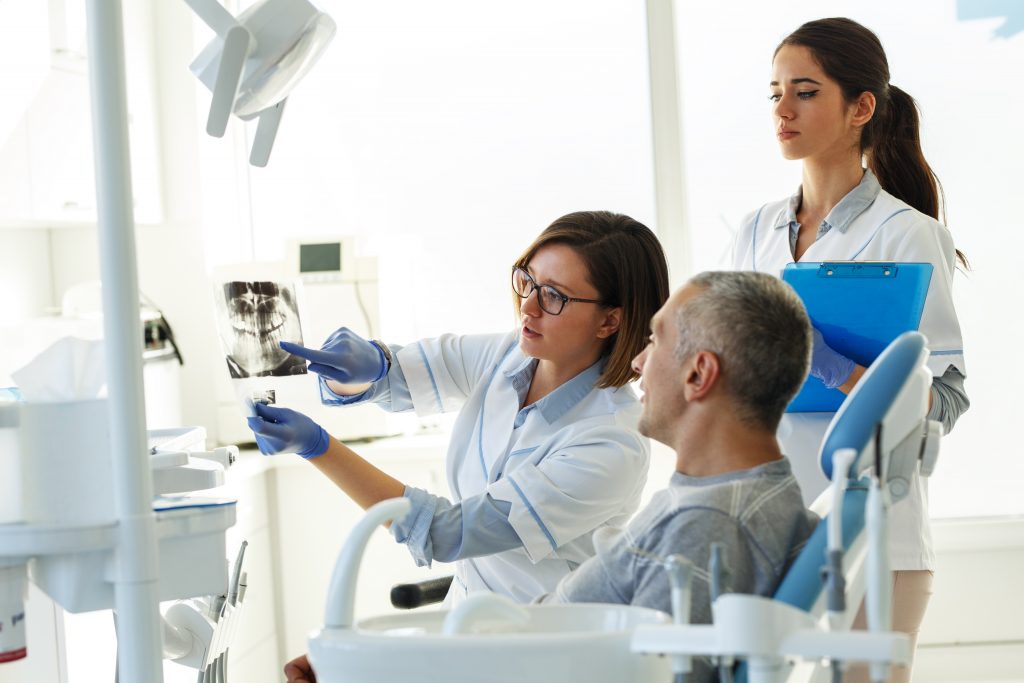
As patients asking dental professionals for specific treatment protocols rises, Derek Hamilton explores how to balance patient expectations with best practice and offers insight into an increasingly popular biofilm management system
Earlier this year, an article on the impact of promotional material on consumer behaviour was published in the Journal of Creative Communications.
Focusing on the effects of television, radio, newspapers, magazines and internet adverts on consumer awareness, interest, conviction, purchase and post-purchase behaviour, it was found each form of media does indeed influence subsequent actions, to some extent (Sama, 2019).
This is of particular interest to those working in the healthcare professions, because patient choice does not always tally with best practice. With a regulatory, ethical and moral responsibility to provide patients with the best possible care, dealing with what they think they want can present a challenge.
Yes, no, maybe…
Dentistry is no exception, and the idea of shared decision-making may help bridge any gap. No longer is healthcare acceptable as a paternalistic model; mutualistic care is much more appropriate in this day and age.
According to Coulter and Collins (2011), shared decision-making can be defined as ‘a process in which clinicians and patients work together to select tests, treatments, management or support packages, based on clinical evidence and the patient’s informed preferences. It involves the provision of evidence-based information about options, outcomes and uncertainties, together with decision support counselling and a system for recording and implementing patients’ informed preferences’.
What does that mean in practical terms so dental professionals can achieve an acceptable shared outcome with patients? Ryan and Cunningham (2014) offer one possible solution in the form of a staged process:
1. Define and/or explain the issue in terms the patient can understand
2. Present all the possible options, including doing nothing
3. Discuss the benefits, risks and costs of each
4. Explore the patient’s feelings and expectations in relation to each option
5. Make sure the patient knows they do not have to make the decision alone; support is available from the dental team, and friends and family might be worth consulting
6. Summarise what is known about the entire situation and make recommendations based on the best available evidence, in combination with clinical experience
7. Clarify the patient’s understanding and give them the opportunity to ask questions or for more information
8. Make or defer the decision and, in most cases, arrange for a follow-up appointment.
When the stars align
So, sometimes patients walk through the door, ask for the impossible and you must face the difficulty of declining to treat them in the way they would like. Sometimes what they want can be modified to meet both sides’ expectations, and sometimes you can just say ‘yes’ because it is a good idea.
On that note, a new professional hygiene protocol has been receiving quite a lot of attention in the media. Stylist, when investigating the rise of oral beauty, came across guided biofilm therapy (GBT), a remarkable option created by EMS Dental for dental biofilm management in prophylaxis.
Meanwhile, Forbes, in its March piece on the best innovative health, fitness and wellbeing treatments in London in 2019, recommended the London Hygienist’s GBT offering, too.
Awareness of GBT is growing among the public, which means an increasing number of patients will be asking their dental practices about it as time goes on. In fact, Stylist has a readership of more than 400,000 in the UK and Forbes has the largest digital audience of millennials. So, you can see there is a huge potential audience out there learning about GBT.
While, of course, there is still the need for dental professionals to carry out a full assessment of their patients’ needs and present all the evidence-based options, the good news is, very often, GBT will be appropriate and, therefore, patient expectations can be met without difficulty.
This is because the GBT protocol is based on individual patient diagnosis and risk assessment to achieve optimal results. The treatment is given in the least invasive way, with the highest level of comfort, safety and efficiency.
In practical terms, biofilm is highlighted with disclosing solution. Both biofilm and early calculus are gently removed both supra- and sub-gingivally using Airflow and Perioflow, both powered by warm water. If needed, this is followed by debridement with No Pain Piezon, which achieves minimally invasive removal of any remaining calculus and mineralised deposits.
Pain-free and fear-free, GBT allows patients to relax in the chair, while receiving highly effective treatment and care that’s second-to-none.
References
Coulter A, Collins A (2011) Making shared decision-making a reality: no decision about me, without me. The King’s Fund
Ryan F, Cunningham S (2014) Shared decision making in healthcare. Fac Dent J 5(3): 124-127
Sama R (2019) Impact of media advertisements on consumer behaviour. J Creat Commun 14(1): 54-68
To find out more about what EMS Dental has to offer dental professionals in the UK, visit www.ems-dental.com


